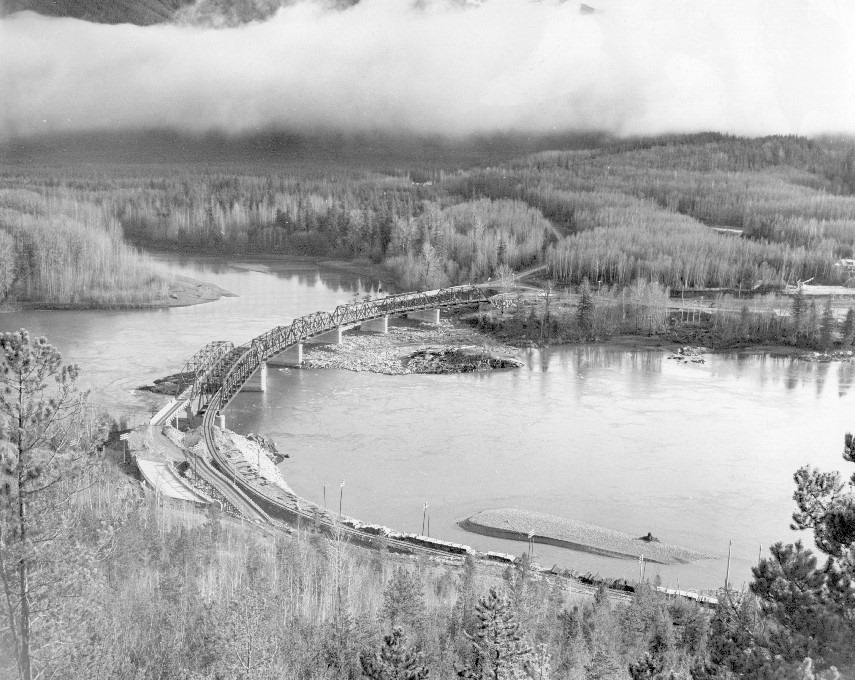The Kitimat branch line operating trestle bridges
The 38.5 mile (62 kilometre) Canadian National Railways branch line from Terrace to Kitimat is one of the last working rail lines in North America that still uses wooden trestle bridges.
There are three large and three smaller trestles along the line, as well a large bridge built to cross the Skeena River at Terrace and three steel Pratt triangular truss bridges over the Lakelse, Wedeene, Little Wedeene Rivers.
Additional photographs are by Jim Thorne. All rights reserved. Jim also added some historic information for this blog.

In the late 1940s, the Aluminum Company of Canada (Alcan) began planning a smelter in Kitimat, to take advantage of the hydro electric capacity that would eventually lead to the reservoir behind the Kenney Dam that fed water through the mountains to the power plant Kemano.
As Alcan was planning and building Kitimat, the company signed transportation contracts with Canadian National Railways promising the railway would get one million 1950 dollars a year in revenue.
The branch line had go through the rugged terrain, come in to the town’s service centre, pass what was then an obstacle known as the Sand Hill and then on to the new aluminum smelter. (The Sand Hill, a glacial deposit, then reached all the way to the Kitimat River. For the past 60 years it has been used to support the local industries by supplying sand, gravel and concrete products and has now shrunk back from its original size.)
CN worked to build the new branch line crossing “difficult terrain of the area, including swamps, hard clay, rocks and watersheds.”
Canadian Transportation magazine reported in July 1952 that the branch line alone would cost $10 million 1952 dollars or $217,391.30 per mile.
Freight travel began as soon as the branch line was completed in December 1954. Temporary huts acted as the train station when passenger service began in January 1955 but were soon overwhelmed. A CN Station was built that would operate until passenger service ended in 1957 when the highway to Terrace was opened.
RELATED Can Kitimat’s historic CN railway station be saved from demolition?
The “milk-run” freight trains were restricted to a maximum speed of 15 miles per hour (it’s 20 mph today) over the Kitimat Sub Division. Along the line CN serviced Lakelse Lake where there was a whistle stop in a clearing by the track. I still remember a vacation at Lakelse in the summer of 1957 when I was seven years old. Seeing the steam locomotive come around a curve out of the forest for the return journey was the moment I fell in love with trains and railways. The other “stations” (again really just clearings) on the timetable were at Wedeene, Dubose and Thunderbird, to pick up loggers, surveyors, fishers and hunters. The trip from Lakelse to Kitimat would have taken one hour and thirty minutes if the passenger train was running on schedule
Though passenger service is long gone, freight service has continued now for more than 60 years. Freight traffic increased in the early 1960s, then slowed as the market for aluminum slowed down. Freight traffic on the line peaked in the years when the Eurocan Pulp & Paper mill was operating (1969 – 2010). Wood chip cars comprised a major portion of traffic on the line. More traffic was added when Ocelot Industries (later owned by Methanex) came on line in the 1980s. In 2010, Eurocan closed and more than half the traffic on the line was lost. Then the Methanex traffic also came to a halt. Today, almost all of the remaining traffic is for Rio Tinto (the successor to Alcan). But CN may soon see new customers on the Kitimat Sub Division.
Today traffic is on the increase with the multi-billion dollar LNG Canada project beginning construction. There is a second smaller liquefied natural gas project planned. As well there is the proposed Pacific Traverse Energy liquefied petroleum gas project which would use tank cars rather than the pipelines planned for the LNG project. That means those more than 60-year-old trestles will even more trains in the future. Those trestles were rebuilt and reinforced in the 1990s to increase load capacity. In 1997, part of the Thunderbird ‘S’ trestle collapsed while being rebuilt and there was a fatality and several serious injuries.
Over the past few months, I set out to photograph those trestle bridges that are accessible. Some of them are deep in the bush and others can only be reached by boat.
The first challenge for CN was the main line was on the north bank of the Skeena River. First built as part of the old Grand Trunk Pacific, the line followed the river through Terrace and then on to the port of Prince Rupert. To reach Kitimat and hemmed in by mountains, CN had to build a switch back so that the trains would go into the Terrace yards, then switch onto the Kitimat branch line. That meant a new rail bridge had to be built alongside an older highway bridge.
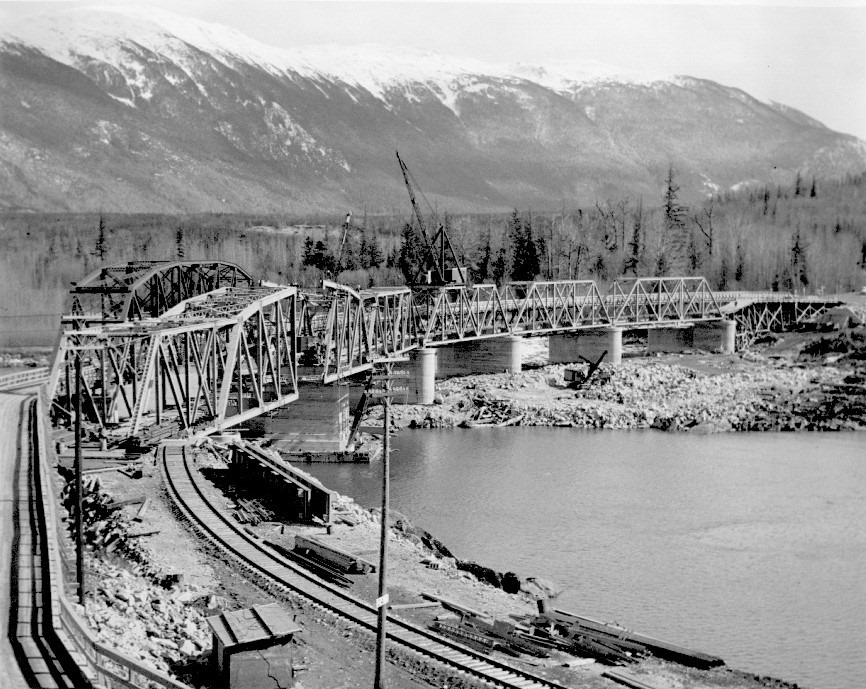



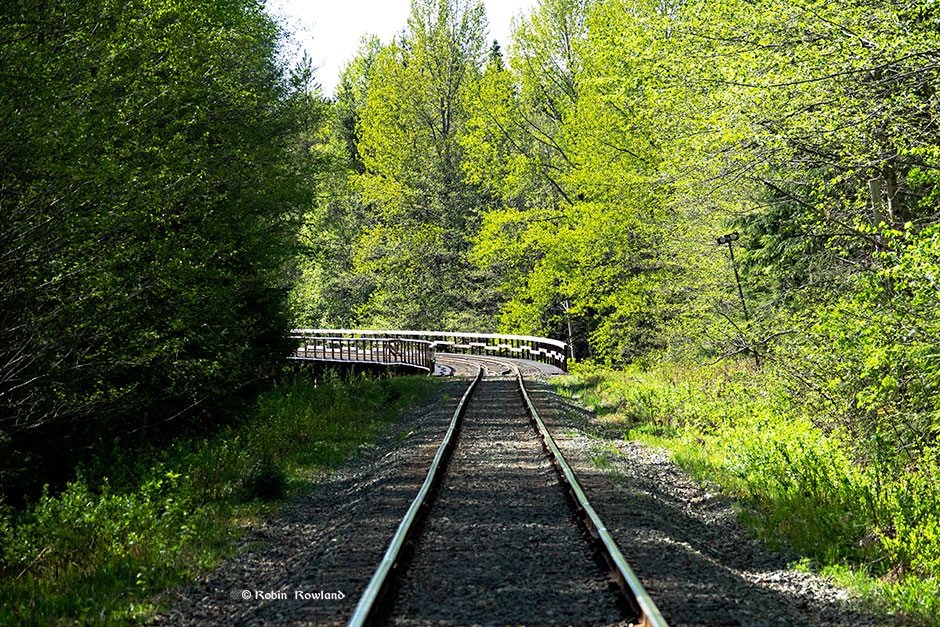

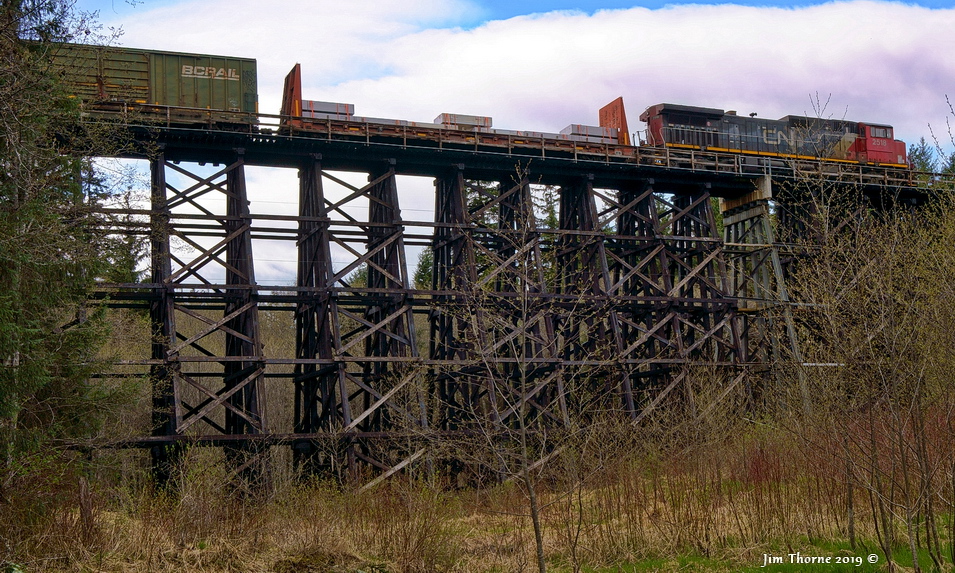

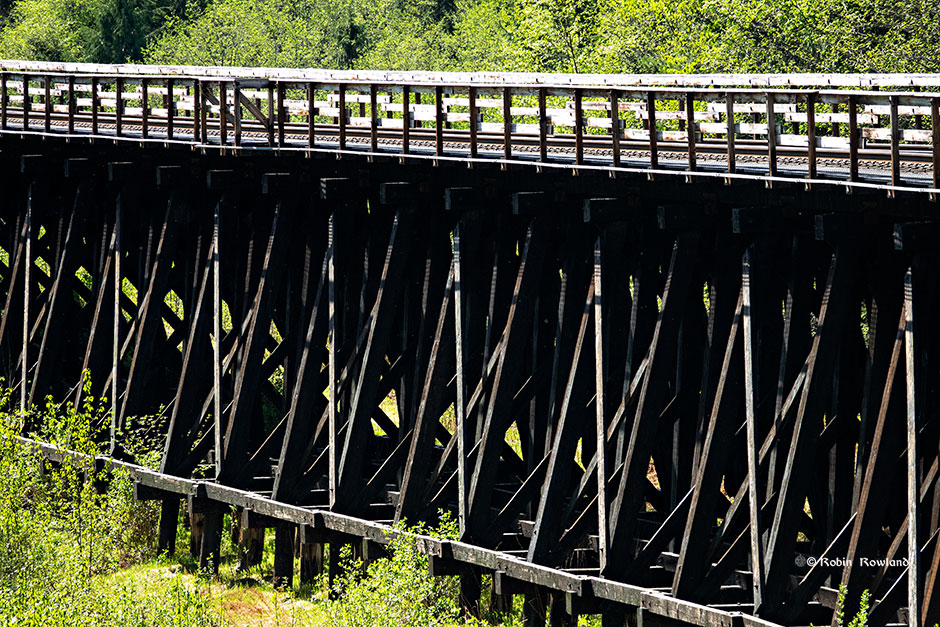
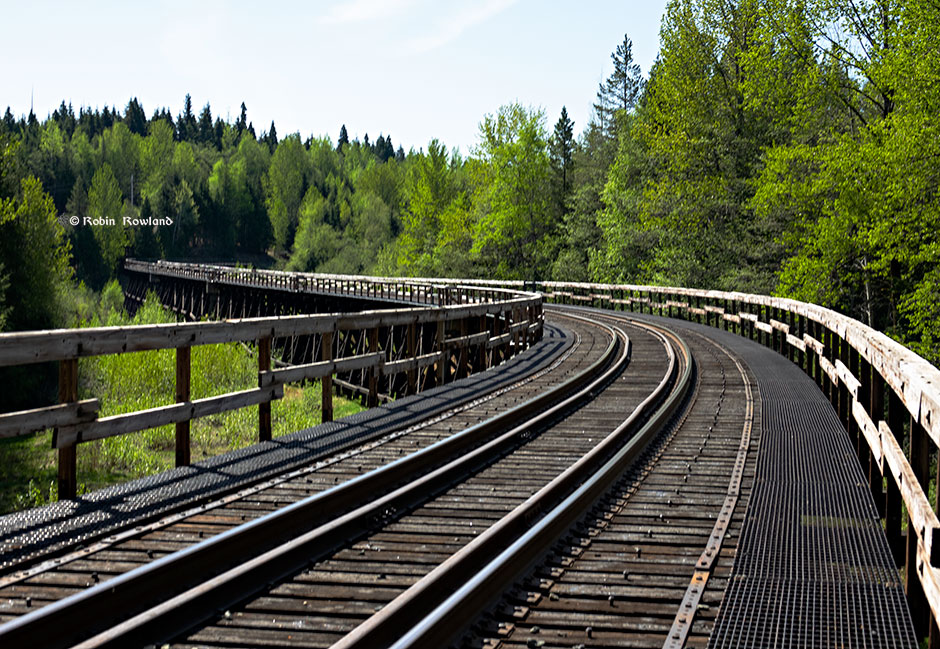
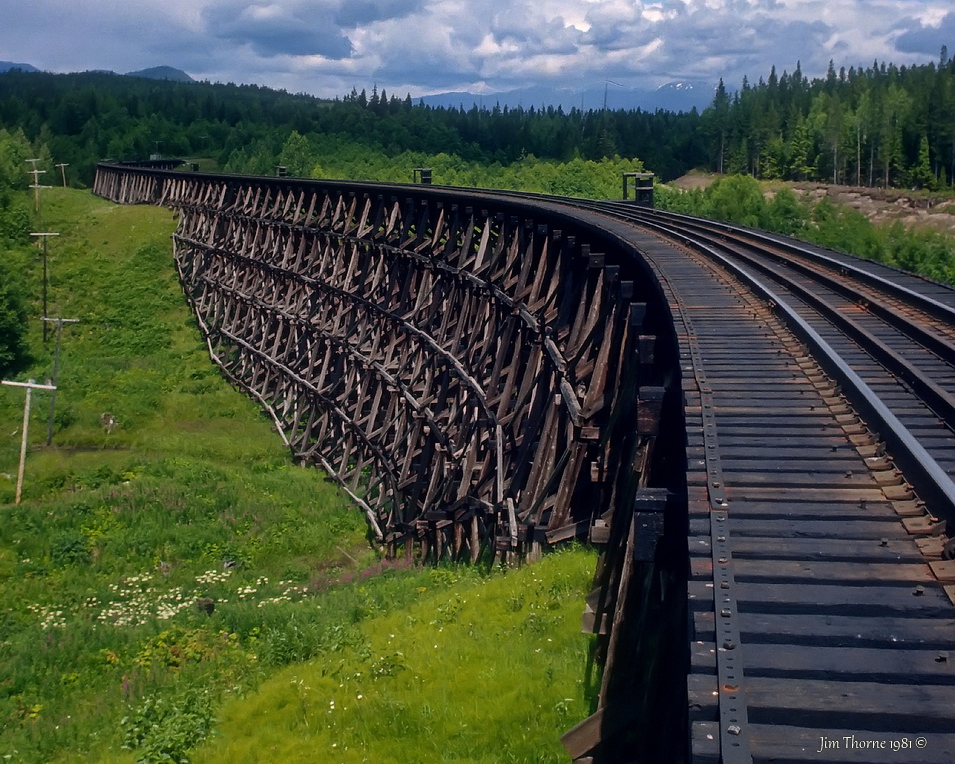
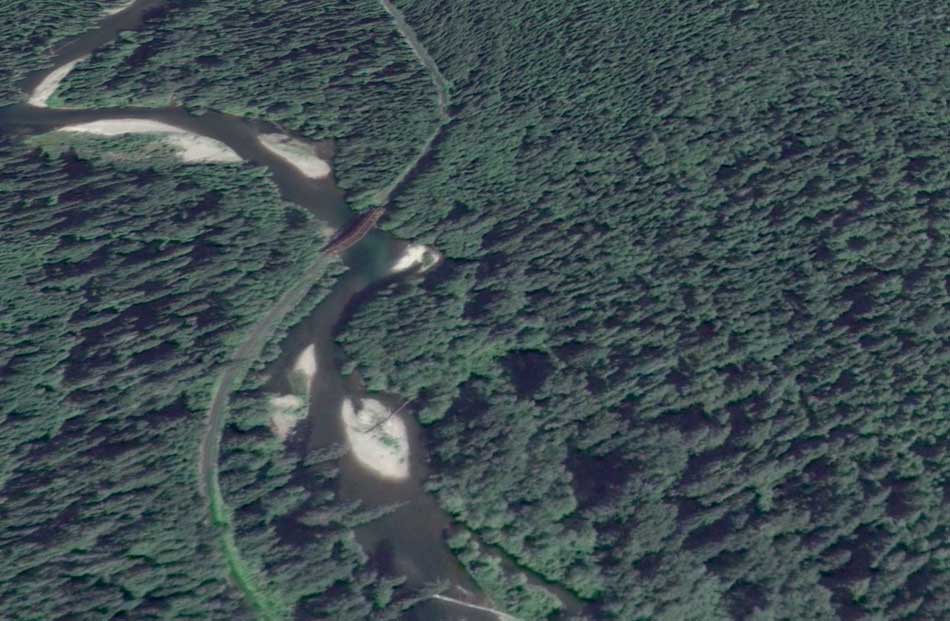



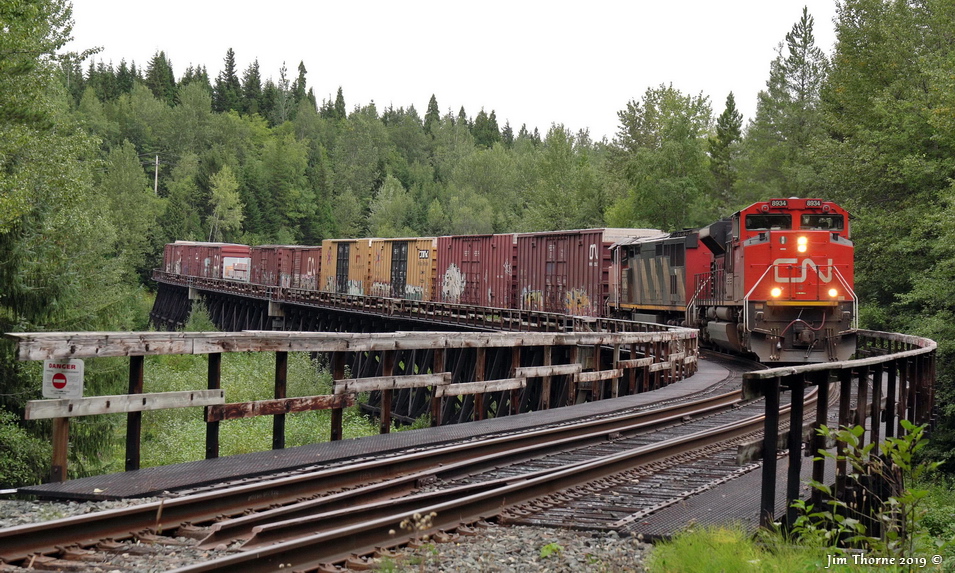
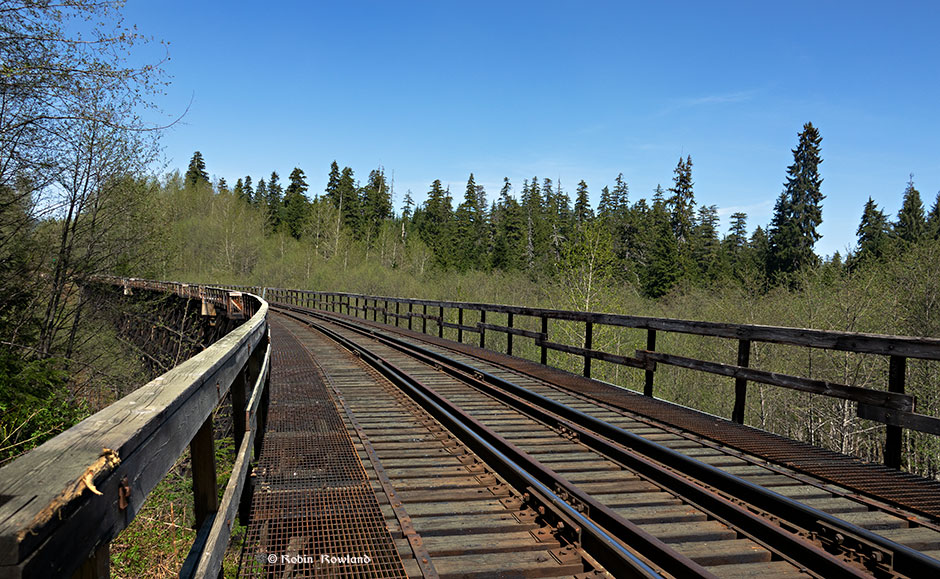
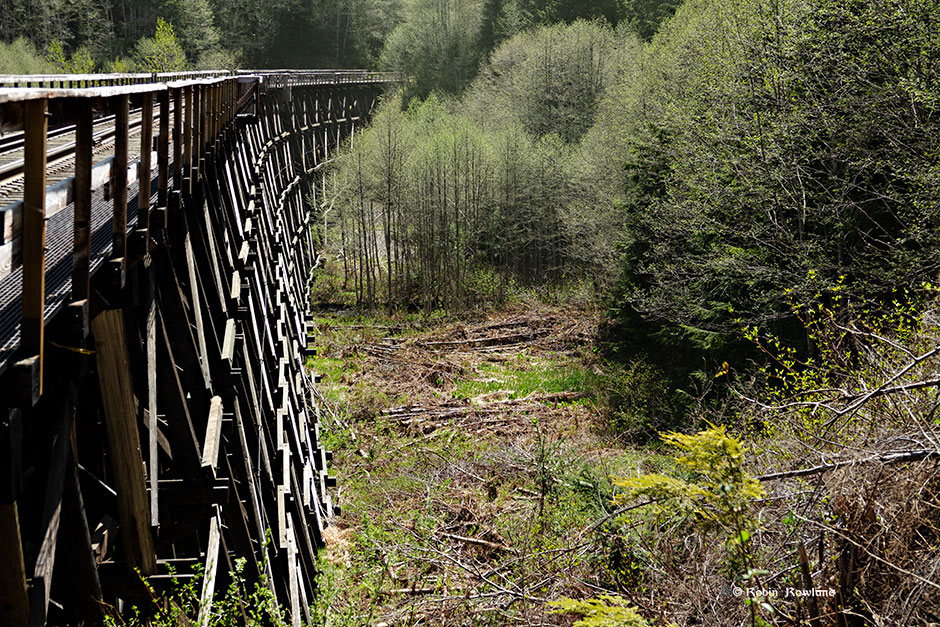
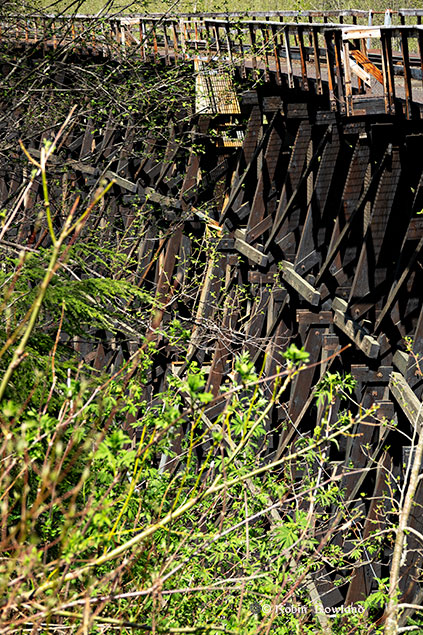

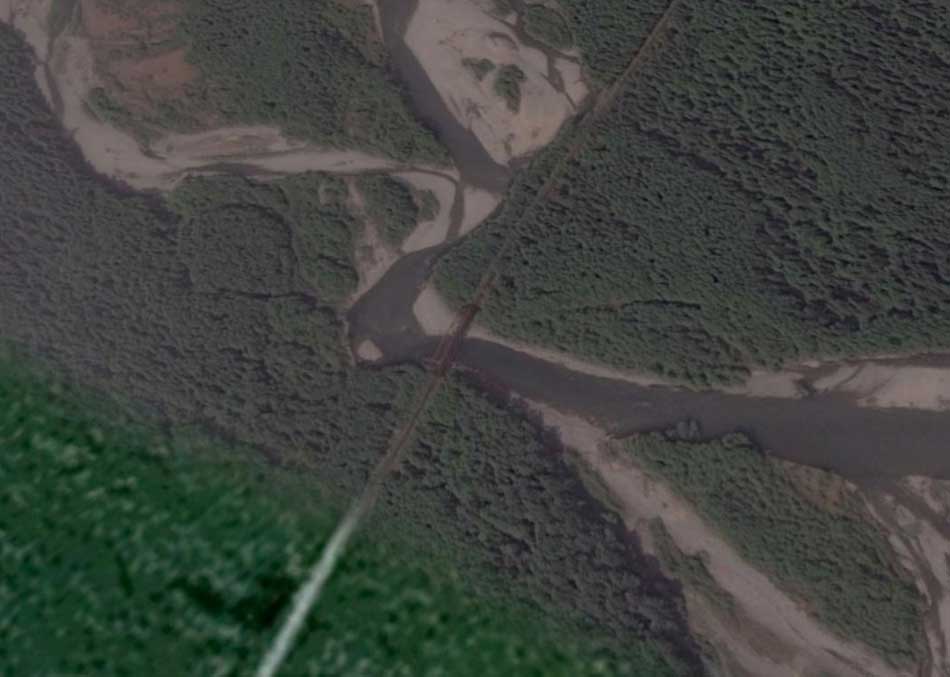

Our track showing the road along the river south of the Wedeenes. There are three trestles, a small one over an unnamed creek, a larger one over Goose Creek and a third inside Kitimat beside Ninth Street.





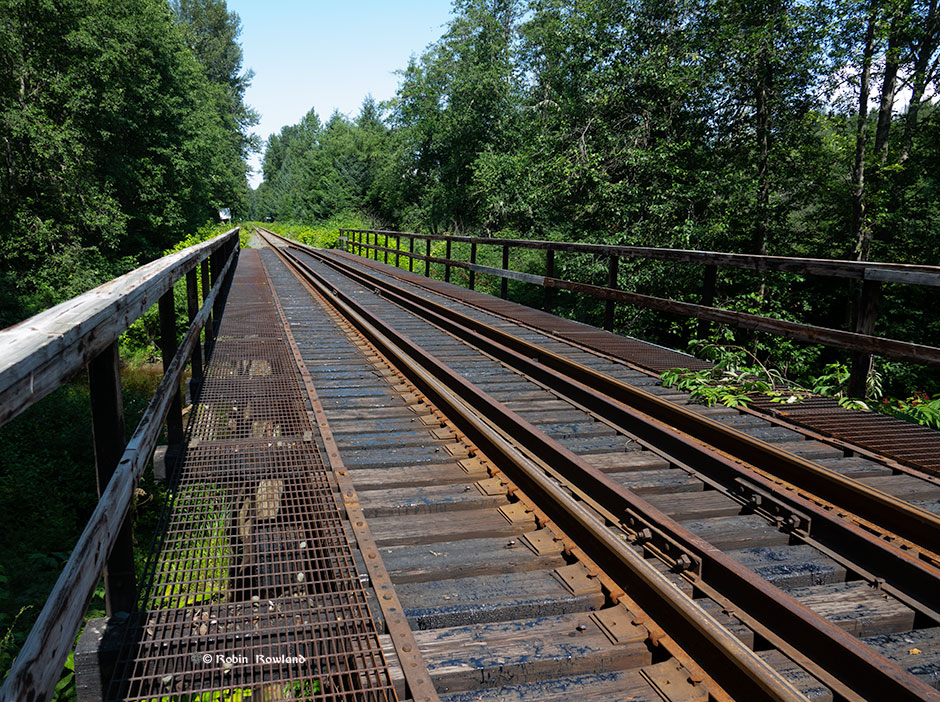
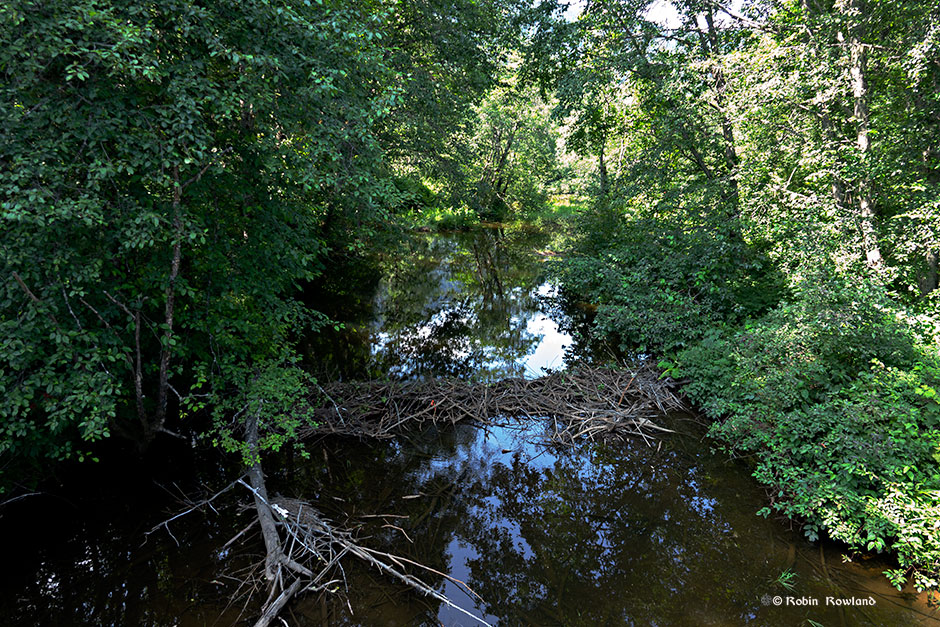




RELATED Can Kitimat’s historic CN railway station be saved from demolition?
